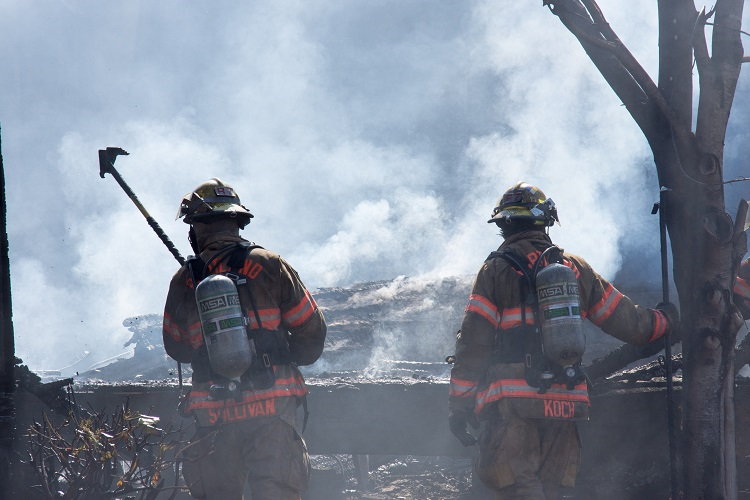Long gone are the days when computer-aided dispatching (CAD) was considered a luxury, and nowadays, it is pretty much the primary way in which public safety communication centers manage information. The advantages of good dispatching software stretch way beyond the 911 centers.
Such systems are used mostly in law enforcement, emergency medical services, as well as for other public safety purposes, and it’s great performance clearly demonstrates the benefits of this technology. In order for you to understand more about them, let’s talk about different aspects that make CAD systems so useful.

911 Communication Centers
Surely, the most commonly known use of computer-aided dispatch systems is in 911 Communication Centers. But how is it used exactly?
Public Safety Answering Point
Well, the most common usage of such software is for prompting action from units that respond first.
The first thing to have in mind when it comes to calls for service that is requiring any combination of law enforcement, firefighters, or EMS, often begins at a public safety answering point.
As experts on this topic from 10-8Systems.com explain, communication center personnel immediately experience different benefits of dispatching software as soon as a call for service is initiated. The main reason for this is that computer software handles data management way better than one that’s based on human assessment.
By utilizing computing possibilities, CAD systems greatly increase the efficiency and effectiveness of an agency’s response. So, whether we are talking about a shooter, a lost child, or anything similar, computer-aided dispatch software is able to manage it all.
It Ensures That Accurate Data is Provided
Here’s the thing, accurate data is extremely important when it comes to the evaluation of the emergency response. An effective CAD system is able to begin providing valuable data even before the call for help is actually answered. From the moment when a caller has accessed the 911 system, all the important information about them is going to show up on the dispatcher’s screen like their location and telephone number for instance.
This ensures that professionals that are using CAD systems are able to immediately assess the priority of the call, as well as to determine which agencies are going to be dispatched, and, of course, to identify the number of units that are necessary for the dispatch.
Law Enforcement, Emergency Medical Services, and Firefighting
The main thing that comes to mind when it comes to the usage of an integrated CAD system in law enforcement, EMS, and firefighting is the fact that such mobile technology can provide vital information right at the fingertips of first responders.
Data Regarding Patient History
When it comes to emergency medical services, dispatch software can let paramedics know everything of importance regarding previous calls for service to that particular patient. Having information about someone’s medical history helps a lot when it comes to the preparation of the medics regarding the type of emergency treatment that is required.
What About Law Enforcement Data?
Law enforcement officers can get a lot of important details about an address or subject while they are traveling to a place that requires their service. Knowing about previous encounters with the person in question that other officers may have had, like for instance, if they were violent or armed, can oftentimes be crucial when it comes to determining the type of response.
How Can the CAD System Help Firefighters?
By utilizing CAD systems, firefighters can access records that are able to alert them of any hazardous materials at the scene that depend on the type of fire. Also, hydrants and other water supply locations can easily be displayed by using CAD’s mapping features.
Modern CAD Technologies VS. Traditional Ones
If a large-scale event arises, it will undoubtedly require units from different zones or sectors which ultimately requires coordination that, in most cases, is very demanding if CAD systems aren’t used.
In addition to dispatching primary units, CAD can also provide timely and accurate information to secondary and tertiary responders as well. Before CAD software was available, back-up and support units needed to rely on the two-way radio in order to obtain details about the emergency event in question.
The main disadvantage of relying just on the radio is the fact that the same information needs to be repeated over and over. CAD systems easily eliminate that inconvenience and keep the radio available for emergency transmissions.
The Private Sector
It’s important to note that dispatching isn’t reserved for entities whose primary function is safety and security. Any organization that works with a mobile workforce can benefit from a CAD system.
The main area of usage of CAD systems is the transportation sector like the taxi sector for instance, which has long known the necessity for effective communication when it comes to their mobile units. The CAD system can readily provide information such as traffic delays, locations of the units available for dispatch, and similar queries.

It should also be mentioned that CAD systems can easily be customized in order to aid the service a company can provide to its customers.
To Wrap Things Up
In the end, the benefits of CAD dispatch systems boil down to efficiency. Every piece of information that needs to be forwarded can be done so easily, and in small time frames as well, without the need for human intervention. CAD systems truly have revolutionized how dispatch operates, and they truly are an invaluable system nowadays.



















